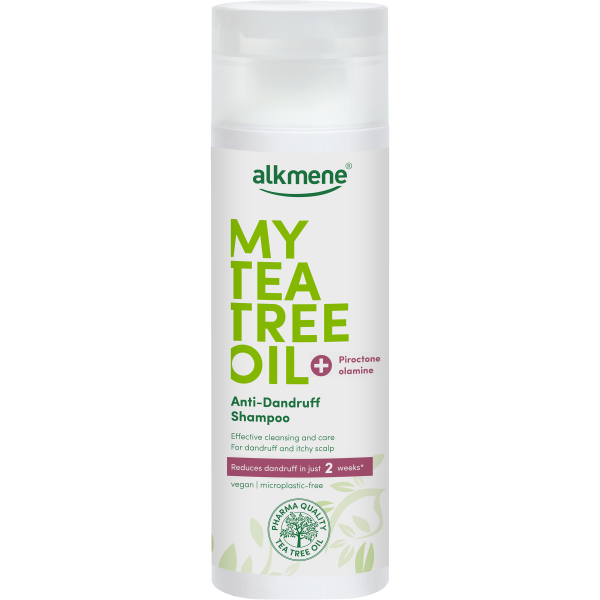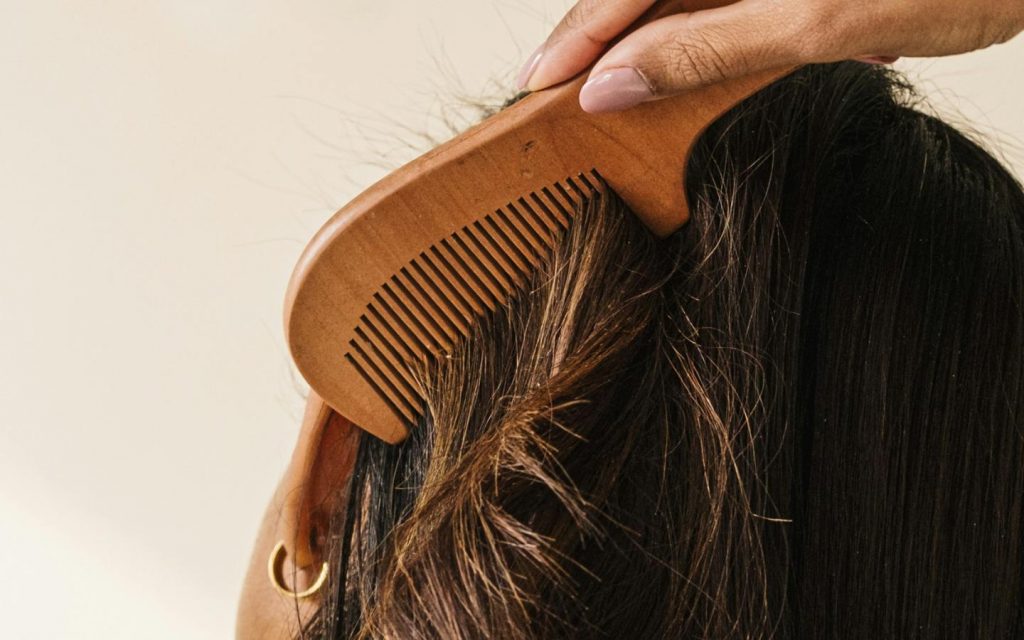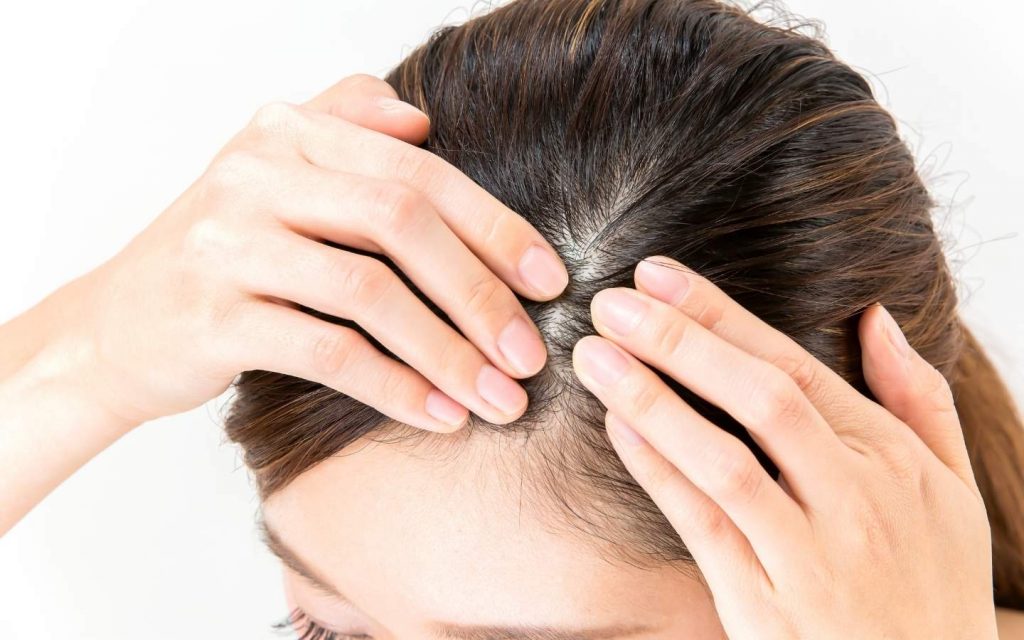
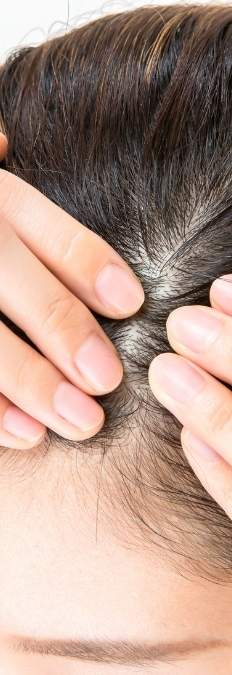
Almost everyone has been affected by dandruff on the head, sometimes annoying flakes settle on the black top during the day or when combing it “snow” downright. Often dandruff can be fought with the right care, but in the case of stubborn and recurring dandruff, there could be a skin disease.
Read on and learn more about how dandruff develops, what types of dandruff there are and how you can successfully combat dandruff.
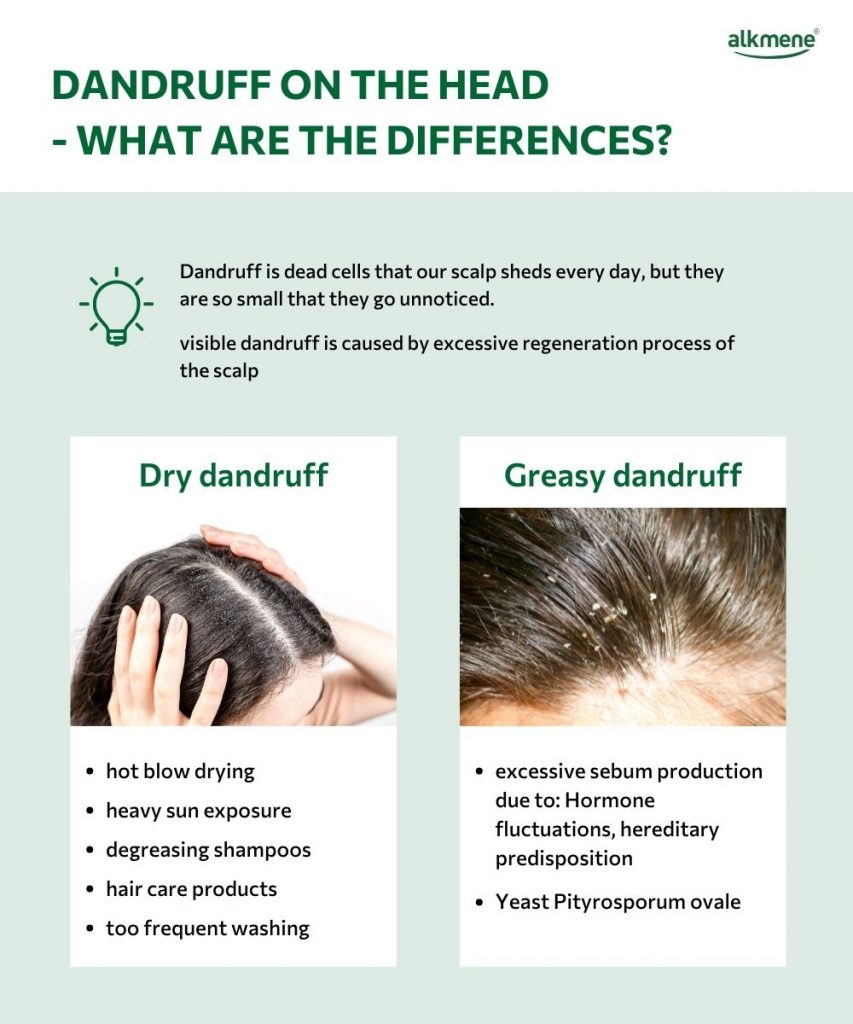
How do dandruff develop?
Did you know that our entire scalp is completely renewed every 14 days?
Dandruff plays an important role in this process: it is dead cells that are shed to make room for new ones. Every day our skin sheds dandruff in this way, but due to its tiny size it goes unnoticed. For us, these dandruff cells only become visible when entire cell clusters are shed from the scalp and clump together in the process. These visible dandruff are caused by an excessive regeneration process of the scalp cells.
The appearance and treatment of dandruff differs depending on whether it is dry or greasy.
A dry scalp can lead to fine, dry dandruff.
Triggers for a dry scalp can be heating air in winter, strong sun exposure in summer, degreasing shampoos or hair care products, as well as too frequent washing and too hot blow-drying.
Greasy dandruff occurs when the scalp produces excessive amounts of sebum and the dead skin cells stick together to form clumps. Triggers for sebum overproduction can be hormone fluctuations, hormone overproduction or a hereditary predisposition to oily scalp.
Greasy dandruff can be further aggravated by the yeast plizae Pityrosporum ovale. The yeast fungus multiplies greatly in oily, flaky scalp and contributes to the scalp producing even more dandruff as a reaction.
- Larger than dry dandruff
- Oily with yellowish color
- Are difficult to dissolve and remain “stuck” to the head or in the hair
- Redness and itching as possible accompanying symptoms
- Men are affected more often than women
In case of greasy dandruff, care should be taken to remove the excess sebum from the scalp and fight the yeast fungus. The following tips will help you with this:
- If the dandruff remains on the scalp, you encourage the production of even more dandruff. You can counteract this problem with thorough brushing.
- Cleaning your hairbrush regularly will ensure that your hair and scalp are not further burdened with residue from hair care products.
- The use of an anti-dandruff shampoo, such as MY TEA TREE OIL Anti Dandruff Shampoo, is optimal for greasy dandruff: it supports the solubility of dandruff, removes excess sebum and in many cases contains an anti-fungal agent.
- CAUTION: Most anti-dandruff shampoos are not suitable for daily use!
- Refrain from daily hair washing, it only further stimulates sebum production.
- Drizzle one drop of tea tree oil concentrate into your regular shampoo per wash, then apply shampoo as usual. Tea tree oil helps to control yeast and reduce itching.
Nettle water against dandruff
If you are prone to dandruff, you can easily make your own nourishing hair tonic from nettles. Take about 50 grams of cleaned and finely chopped leaves and roots and add them to 500 milliliters of apple cider vinegar. Leave everything in a sunny place for three weeks and then pour into dark bottles. Ready is your DIY hair tonic.
Dilute the mixture for use in a ratio of one to five with water, massage the liquid into the scalp and then leave everything on for about 30 minutes. If you do not have problems with a particularly sensitive scalp, you can also apply the hair tonic undiluted and leave it on for a correspondingly shorter time. About 15 minutes is enough to do something good for the scalp.
At what point is my dandruff a case for the doctor?
If you cannot determine for yourself whether the dandruff is dry or greasy, it is advisable to consult a dermatologist. The wrong treatment of the scalp, for example degreasing shampoos for dry dandruff, will cause the problem to worsen.
If you have determined your dandruff and the adapted care shows no effect after several weeks, you should also see a dermatologist.
Not only incorrect care can be a trigger for dandruff, but skin diseases such as psoriasis, fungal infections or neurodermatitis can also be at the root of the problem. Especially in the case of recurring and stubborn dandruff, inflammation and weeping, itchy scalp, you should seek medical advice to rule out a skin disease or have it treated.
![]()
